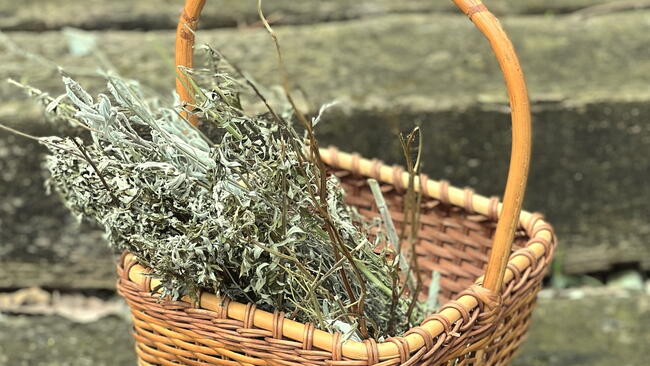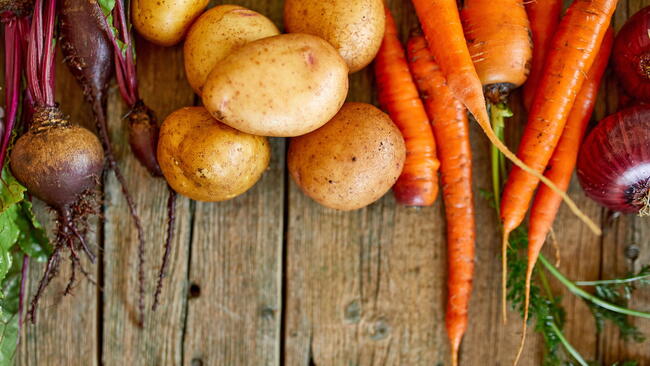Ten vegetables that give you the best bang for your buck!
Everything’s costing more these days, but gardening can come to the rescue if you know what to grow for the best returns. If you could only grow ten crops, these money-saving crops will trim your grocery bill the most.
Growing your own nutritious fruits and vegetables can be an empowering way to stretch precious budgets that little bit further when it comes to some crops. However, not all crops are money-savers unless you’re growing on a large scale.
Top 10 Money-Saving Crops
1. Herbs
The cost of herbs is crazy? Why? Why when you can grow them so easily since they’re just leafy plants and are unfussy about where they’re planted? Save money by growing basil, parsley, cilantro, and other leafy herbs to harvest fresh as required, picking only what you need at any time.
Here’s an idea: Grow basil or parsley from seedlings split up from a pot of living herbs from the grocery store, oregano from sections taken from a mature plant elsewhere, and mint and rosemary raised from cuttings.
The great thing about growing herbs is that they’re so easy to grow and will dramatically improve mealtimes with their boost of flavor. They’re good for you, too, of course! And it’s so easy to store these herbs to use later on, whether by freezing them in ice cubes, drying them, then flaking them into airtight jars, or creating delicious-flavored vinegar and oils. Grow a mix and save more than just a few pennies!
2. Pole Beans
Beans of all types are remarkably prolific, but it’s climbing beans that offer the most value. Two great types to grow are those awesome runners and slender French or fine beans. Sow soon, so they’re ready to plant next month once the frosts are done. Also, try some borlotti beans and pick some of the pods young to eat fresh, but leave the bulk to mature for drying to have beans over winter, too.
Plant beans along arches or set up traditional bean supports. Use a wide-diameter circular pot to get an even spread of canes, and use string to create two horizontal bands around the canes.
Why do beans earn their spot in our top 10? Because the more you pick them, the more they’ll keep producing, giving many, many generous handfuls of beans throughout the summer! Any gluts can easily be frozen or can be used to make dilly beans! This way, you can have freeze-fresh beans, canned beans, and dried beans.
Beans are healthy, filling, and protein-rich. Learn more about how to grow pole beans.
3. Tomatoes
We can’t not have tomatoes on our list! Decent-tasting, vine-ripened tomatoes command a premium in the shops, probably because they need to be grown for longer and then transported with extra care. But gardeners needn’t worry about things like food miles!
You only need a small space for fruiting vegetables such as tomatoes. Try different types of tomatoes, such as a paste variety for sauce-making, a cherry tomato for snacking and salads, and a great big fist-sized tomato that’s not ashamed to be bold and brazen.
In cool climates, tomatoes always seem slow to start cropping, but you can artificially pollinate the flowers with a T-tip (or electric toothbrush)!
4. Zucchini
In many grocery stores, zucchinis come in packs of three. Even in season, they’re pricey, and it’s a mystery as to why, given their fame for being outrageously productive – so much so that most gardeners have to give them away!
Incredibly prolific zucchini can be used in everything from stir-fries to cakes, so it easily earns its keep in the garden. There are yellow-fruited varieties, ribbed zucchini, and other fun summer varieties.
Set into soil enriched with loads of nutrient-rich compost. Try growing companion flowers such as marigolds nearby to improve pollination and boost harvests further.
Then it’s simply the usual trick: keep them watered and help the early plants along with a spot of hand pollination if necessary. Oh, and pick, pick, pick and pick!
5. Garlic
Go, go, garlic! This breath-bashing bulb makes it into 90% of the dishes we cook. Too much? Whatever!
Garlic is relatively expensive but takes up hardly any space, and it stores well, too—especially softneck varieties. Harvest garlic by midsummer and pop in a follow-on crop straight away to make the most of your space.
Use garlic fresh from harvesting – but make it go even further by not just curing garlic to store in sacks or strings, but also making your own garlic granules of garlic powder. Peel individual cloves, then cut into thin slices. Spread out on a tray and dehydrate at 150F. Once dry, whisk up in a spice grinder or food processor, then store in airtight jars. They should keep like this for a year, at the very least, quite possibly two! See our post on making garlic powder.
6. Mushrooms
Mushrooms? Really? Well, yes – and especially oyster mushrooms, which aren’t cheap – particularly if you want lots of them! Cook oyster mushroom stakes by layering them with a marinade, then rendering them down into a caramelized and bubbling deliciousness!
The easiest way to grow mushrooms is to use a kit. You’ll get three times what you spend on the kits back in mushrooms, as they keep coming over two or three flushes.
If you want to save even more money, use a kit that employs straw pellets to which you add your spawn – which are the ‘seeds’ that start the mushrooms off. Similar to garlic, you can dehydrate some mushrooms to grind them into a powder – perfect for adding a depth of umami flavor to savory dishes.
See how to grow mushrooms indoors.
7. Corn
Who doesn’t love sweet corn? Pick ’em fresh, smother them in butter and pepper, and crunch down on them. Oh yes! But there’s also corn for drying and grinding into cornmeal. If you’ve got plenty of space, this is a great way to fill the pantry with another staple that can be turned into so many dishes – from homemade tortillas to cornbread to corndogs.
Some varieties of corn can be eaten fresh as sweet corn or left to dry for grinding. Look for ‘dent’ varieties of corn, or just check the variety description to make sure it’s suitable for grinding. If you want to grow corn for grinding, you’ll need to leave it on the plant to dry out to a crisp, then bring it inside to continue drying before shucking and storing it in an airtight container till it’s time to grind into meal for your recipes.
Be sure to plant corn in blocks to aid wind pollination. See how to plant and grow corn.
8. Lettuce and Salad Leaves
Those pre-bagged bags of salad aren’t good value for money. The atmosphere is almost treated to extend the shelf life—replacing oxygen with nitrogen or carbon dioxide to keep the leaves fresher for longer. But grow them yourself, of course, and none of that matters. You can just pop out to your own personal salad bar whenever you need a hit of fresh. Mixes of leaves are fun to sow, too. You can buy ready-mixed packets or mix your own. This way, you can recreate that variety you get in bagged salads.
By harvesting little and often, you can keep cut-and-come-again greens such as loose-leaf lettuce cropping for months. Also, make repeat sowings of fast-growing salad toppers like radishes, baby beets, and scallions as you harvest throughout the growing season. Or, grow them between slower-growing crops so they don’t take up extra space.
9. Leafy Greens
Hard-working leafy greens such as chard, arugula, and kale can be harvested for months for soups, stews, and more for practically no money.
When picking, remember to take the outside leaves – the biggest leaves – and let the remainder to grow on. That way, you can extend the harvest of individual plants over many weeks.
10. BONUS: Berries!
OK, we’re beyond vegetables now. But berries are so easy to grow. Soft fruits like blueberries, strawberries, and raspberries cost a small fortune in grocery stores. But they’re so easy to grow and quite abundant in their harvest. Plus, once you’ve planted berry plants, they’ll crop for years to come.
The cheapest way to buy them is bare-root, when the plants are dormant in winter. It’s a bit late to plant them bare-root in most areas now, but that doesn’t matter, as they’re usually sold as ready-to-plant potted plants, too.
Like many of the most generous crops, be sure to pick berries often as they ripen. They’re so easy to freeze – just spread them out onto a parchment-lined tray, pop them in the freezer till they’re frozen solid, then decant them into labeled freezer bags or containers to go back into the freezer to use as needed.
Incidentally, just an aside – what do you reckon is more expensive? Well, in the grocery store at the moment, these three apples cost the same as just this one, a solitary strawberry! Mad huh? That’s why you need to grow your own!
Are we missing any more inflation-busting crops? Please tell us in the comments below.








